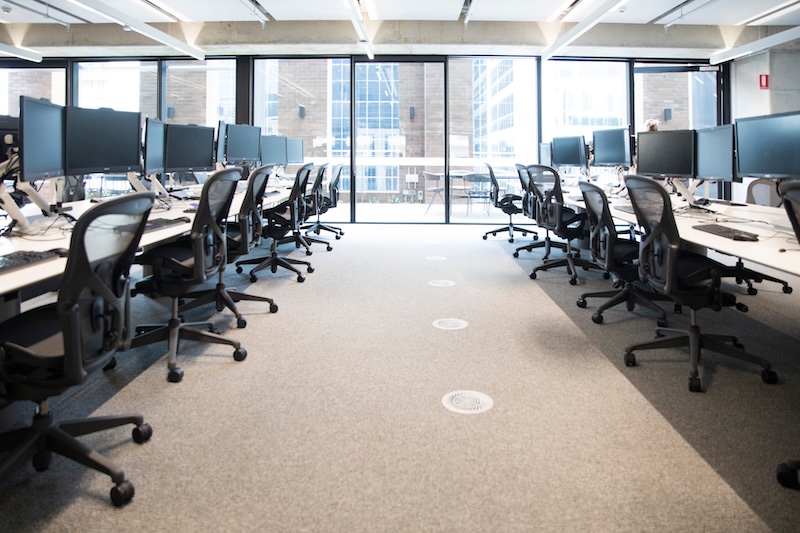In a fast-paced and resource-conscious business landscape, seat leasing has emerged as a powerful solution for companies seeking agility without compromising productivity. This model provides flexible office space and support infrastructure, allowing businesses to scale rapidly while controlling costs—particularly valuable for startups, SMEs, and outsourcing firms.

What Is Seat Leasing?
Seat leasing is a business arrangement where a company rents out ready-to-use office spaces—complete with furniture, internet, electricity, and sometimes staff—from a third-party provider. It’s commonly used in outsourcing hubs like the Philippines, India, and Eastern Europe.
There are typically three types:
- Warm Seat Leasing: Includes equipment (e.g., computers, headsets) and utilities.
- Cold Seat Leasing: Only the physical space and furnishings are provided.
- Staff Leasing: Includes seat rental and the outsourced workforce, such as virtual assistants or IT support staff.
Why Seat Leasing Is Gaining Popularity
1. Cost-Efficiency
Seat leasing significantly reduces capital expenditure. There’s no need for long-term leases, construction costs, or purchasing office furniture and equipment.
2. Faster Market Entry
Businesses can establish operations in new markets without the logistical hurdles of setting up a traditional office.
3. Scalability
As your team grows, you can lease more seats without renegotiating contracts or relocating.
4. Operational Support
Providers often include IT support, admin services, and facilities management.
5. Risk Reduction
Leasing agreements tend to be short-term and flexible, reducing the financial risk of expansion or relocation.
Who Should Consider Seat Leasing?
Seat leasing is ideal for:
- Startups seeking quick, cost-effective office solutions
- Outsourcing companies needing offshore operations
- SMEs testing new markets without full commitment
- Freelancers and remote teams needing occasional collaboration space
Comparing Seat Leasing vs. Traditional Leasing
| Feature | Seat Leasing | Traditional Leasing |
|---|---|---|
| Setup Time | Days | Months |
| Initial Cost | Low | High |
| Flexibility | High | Low |
| Maintenance | Included | Client Responsibility |
| Staffing | Optional | Separate Process |
Seat Leasing in the Philippines: A Global Hotspot
The Philippines has become a prime destination for seat leasing due to its:
- Large English-speaking talent pool
- Competitive labor costs
- Modern IT infrastructure
- Government incentives for BPO firms
Top cities include Metro Manila, Cebu, and Davao. According to Outsource Accelerator, over 700 BPO companies operate in the country, many using seat leasing models.
Key Considerations Before Choosing a Seat Leasing Provider
- Location: Proximity to public transport and talent pools
- Infrastructure: Internet speed, power backup, and security
- Amenities: Meeting rooms, pantry, and IT support
- Contract Terms: Lease duration, exit clauses, and pricing transparency
- Provider Reputation: Client reviews and testimonials
Potential Drawbacks and How to Mitigate Them
While seat leasing offers numerous advantages, it’s not without risks:
- Limited Customization: Office layout and branding may be restricted
- Solution: Negotiate for partial custom setups or signage rights
- Data Security Concerns: Especially in shared environments
- Solution: Choose providers with strong cybersecurity protocols
- Hidden Costs: Add-ons like extra bandwidth or overtime use
- Solution: Review contracts carefully and ask for a breakdown
How to Get Started with Seat Leasing
- Assess Your Needs: Number of seats, location, duration
- Research Providers: Compare services and read reviews
- Request a Proposal: Include pricing, amenities, and SLAs
- Inspect the Facility: If possible, visit the site or request a virtual tour
- Negotiate Terms: Ensure clarity on fees and deliverables
- Sign Agreement: Read the fine print carefully
Real-World Example: Startup Success with Seat Leasing
A SaaS startup from the U.S. expanded into Southeast Asia by leasing 20 seats in Manila. They avoided six-figure startup costs and were operational in just two weeks. Within 18 months, their offshore team grew to 70 without needing to change locations.
Internal Efficiency Meets External Reach
For businesses aiming to expand or establish satellite teams, seat leasing offers a compelling blend of flexibility, affordability, and speed. It enables teams to hit the ground running—without the weight of heavy infrastructure costs.
Explore Virtual Office Services
Looking for even more flexible options? Learn about our virtual office services to enhance your remote operations.
Ready to Scale Smarter?
Partner with a Trusted Seat Leasing Expert
Want a hassle-free, cost-effective way to establish your team in the Philippines? Outsource Philippines offers fully-equipped seat leasing solutions tailored to your business needs. From startups to scaling enterprises, we’ve got your back.
Frequently Asked Questions
What is the difference between seat leasing and BPO?
Seat leasing provides infrastructure; BPO includes infrastructure and outsourced staff handling specific functions.
How much does seat leasing cost?
Costs vary by location and services but typically range from $100 to $300 per seat per month.
Is seat leasing only for large companies?
No. It’s ideal for startups, SMEs, and even individual freelancers.
Can I customize the office space?
To an extent. Some providers allow branding or minor layout changes.
What happens if I need more seats during the contract?
Most providers offer scalable contracts that allow you to add seats with minimal hassle.








